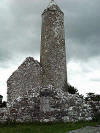|
| SUMMARY | GENERAL | PHOTO | TECHNICAL | WEB DEV | WORKSHOP | HOME | ||
| SUMMARY | LINKS | REFERENCE | UTILITIES | DESIGN | CSS | HTML | JAVASCRIPT | |
| SUMMARY | LINKS | COMMANDS | REFERENCE | SHADOWS | VALIDATION | FILTERS | NOTES | WORKSHOP |
| Summary of Content |
|
I'm trying to economise on the coding for the multiple images on my
travel web pages. Apart from the number of pictures, the coding, especially
using FrontPage's design tools produces tons of code. I've gone through it
substituting what I think could be used instead. It hasn't broken yet, but this
doesn't mean I've done it correctly or adheres to 'good practice'. Its turned
out to be a combination of CSS and tables as actual table shapes in CSS seem to
be extremely difficult for no discernable benefit. |
| If what I've done seems dead simple and everyone always does it this way, how come I haven't seen this anywhere else (certainly not in tutorial form) and it took me quite some time to put together so it worked (revised 09/05/05). |
| What I've done |
A short style declaration (embedded or external CSS) sets up the framework, just once, for all the images on the page.
What's not defined in the style declaration is provided in the table declaration, e.g., size/width, borders and alignment. Using this method, I've managed to reduce my Ireland Photographs page by a third = 200+ lines of code There should be no difference(?) in the results. Not tested outside IE yet.
If any of this is not good practice or has glaring errors please tell me! I've since learnt that its not good practice and could cause errors in some browsers if tags are not terminated. |
| How I did it |
| Insert in between <Head> and </Head> |
|
<style type="text/css"> |
| Open Style declaration (only if using internal CSS) |
| <link rel="stylesheet" type="text/css" href="CSSName.css"> |
| Link external Style declaration (only if using external CSS) |
| p.imageS {width:120px;height:95px;filter:shadow(color:gray);} |
| (Note class p.) A drop shadow border 20px larger than the thumbnail image, e.g width 100px + 20px = 120px shadow. height 75px + 20px = 95px shadow. |
| p.imageL {width:120px;height:153px;filter:shadow(color:gray);} |
| A drop shadow border 20px larger than the thumbnail image, e.g width 100px + 20px = 120px shadow. height 133px + 20px = 153px shadow. |
| img.BlankS {width:100px; height:75px; border: white solid 3px; } |
| The image (100x75px) + border. Solid White, 3px wide. To go with p.ImageS |
| tr.Pictitle {font-family: Verdana; font-size: 10pt; color: #000080; vertical-align: top; text-align: center; height: 25} |
| The picture title class with vertical padding and centre, top alignment to suit the images. |
| </style> |
| Close Style declaration (only required if internal CSS is used) |
| Insert in between <Body> and </Body> at required image location |
| <table border="0" cellpadding="0" style="border-collapse: collapse; font-family:Verdana; font-size:x-small; color:#000080; text-align:center;" width="100%" id="table2"> |
| Table declaration - no border, no padding, no internal (cell) borders, font type Verdana, font size x-small (approx 10px), colour navy, text (and image alignment) centred otherwise left shadow goes missing, width of table 100% of screen, table id 2. |
| Code for a placing a single image |
| <td><p class="imageS"><a href="mainimage.jpg"><img src="thumbnail.jpg" class="BlankS"> |
| <td>table division <p.class> - class for dropshadow - <a href> destination full size image and location - <img.src>thumbnail image and location - class="BlankS" for a 100 x 75px image with a 3px white border. |
| A Single line of picture descriptions (for six images) |
| <tr class="Pictitle"><td>Pic 1<td>Pic 2<td>Pic 3<td>Pic 4<td>Pic 5<td>Pic 6 |
<tr.class> new line in the table with font, size, padding and alignment - <td> table data division - Pic 1 text description for image 1 - <td> table division...etc.... |
| Close all declarations opened within the table |
| </a></td></tr></font></table> |
| Close all declarations - </a> closes <a href> anchor reference - </td> closes <td> table data declaration - </tr> closes <tr> table row - </font> closes font type Verdana statement declared in the table declaration - </table> closes the <table....> |
| Pic 1 | Pic 2 | Pic 3 | Pic 4 | Pic 5 | Pic 6 |
| Pic 7 | Pic 8 | Pic 9 | Pic 10 | Pic 11 | Pic 12 |
Last Updated11/08/2009 - Neils Resource Web - Web Development - Design - Image Economy

